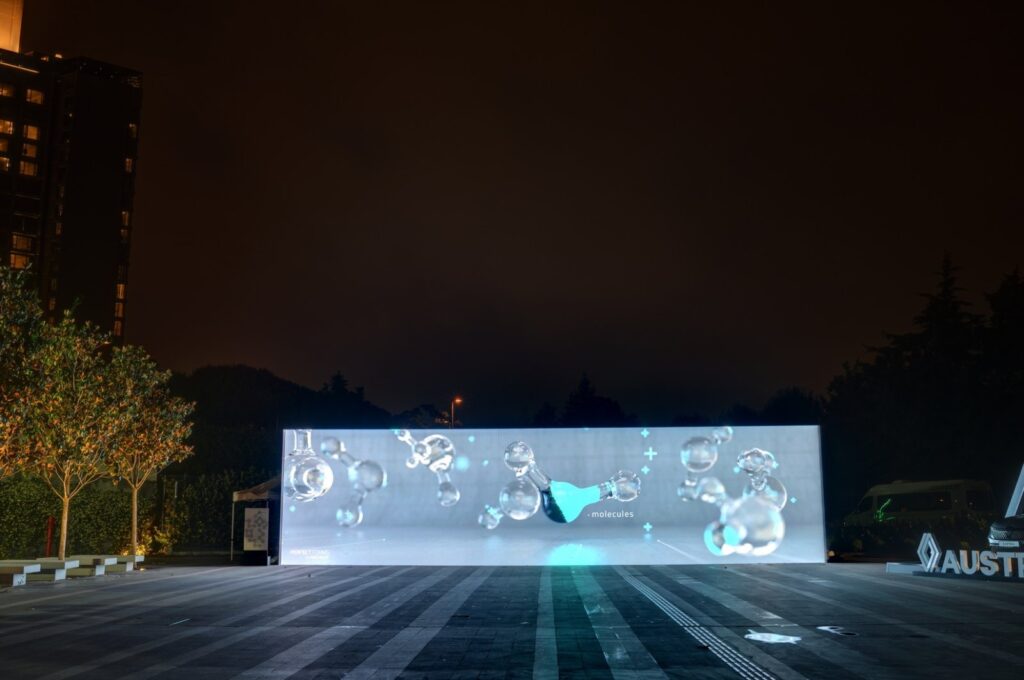
Razmig Bedirian
ABU DHABI: The Department of Culture and Tourism – Abu Dhabi has unveiled plans for a new museum in the Cultural District on Saadiyat Island.
Named the Natural History Museum Abu Dhabi, the project is currently under construction and is due to be completed at the end of 2025.
It will be home to some of the rarest specimens on the planet. Its galleries will span a 13.8 billion-year journey through time and space, from the the beginnings of the universe to a glimpse at its possible future.
:quality(70)/cloudfront-eu-central-1.images.arcpublishing.com/thenational/BEGDXDN36BCQXNJZAAUDILA7A4.jpg?w=810&ssl=1)
Highlights of the museum will include “Stan”, the world-famous 11.7 metre-tall Tyrannosaurus rex that is one of the best-preserved and most-studied fossils of the late Cretaceous period predator.
Stan will be joined by a specimen of the Murchison meteorite, which crash-landed as a shower of stones in Australia in 1969 and has since revealed new information about the early solar system.
The meteorite bears a variety of organic “stardust” compounds as well as pre-solar grains that formed more than seven billion years ago, long before our solar system existed.
The Natural History Museum Abu Dhabi, conceived in partnership with Miral, will also be a scientific research and teaching institution, featuring immersive displays beside curated collections of artefacts and specimens.
The museum’s galleries will take visitors on a journey back to the beginning of time, narrating the evolution of our universe, the Earth’s formation and the history of life on our planet.
:quality(70)/cloudfront-eu-central-1.images.arcpublishing.com/thenational/MHZRKGNBQFFFLHV5ZM62QX4S6E.jpg?w=810&ssl=1)
“Natural history has a new home here in Abu Dhabi and we will tell the story of our universe through some of the most incredible specimens known to mankind,” Mohamed Khalifa Al Mubarak, Chairman of DCT – Abu Dhabi, said.
“These are rare gifts from nature that we are proud to protect and share with the world, to unlock knowledge and discovery and to inspire the next generation of global advocates responsible for our precious planet. Natural history has the power to unite us, and we are fulfilling our vision to not only share our experiences and knowledge with the world, but to continue Abu Dhabi’s mission as a place for research, collaboration and rapidly growing creative industries.”
The Natural History Museum Abu Dhabi will also, for the first time in the Middle East, present the history of life on Earth through an Arabian lens, where local fauna, flora and the geological history of the region will be part of the visitor journey.
According to DCT – Abu Dhabi, the museum will join a global community of natural history institutions committed to public education. The museum’s scientific research facility will undertake studies in areas including zoology, palaeontology, marine biology, molecular research (DNA and proteomics) and earth sciences. The primary aim will be to advance knowledge and increase understanding of our past, but also to create a think tank for future innovation and emerging technologies.
:quality(70)/cloudfront-eu-central-1.images.arcpublishing.com/thenational/NKADLITSXZBQJC5ETILUA4V4TA.jpg?w=810&ssl=1)
The museum was designed by architecture firm Mecanoo and it will cover an area of more than 35,000 square metres. The design alludes to natural rock formations, reflecting on the museum’s mission of engaging the public with the natural world.
“Every element of the design uses geometry as an overriding theme, with pentagonal shapes resembling cellular structures,” DCT – Abu Dhabi said. “Also playing an important role in the design are water and vegetation, potent symbols of life in the desert. In addition to the gallery display areas, the museum will include temporary exhibition spaces for special events and theatre facilities. Furthermore, enabling and marine works have commenced on the Natural History Museum Abu Dhabi construction site.”
The museum will also offer employment opportunities in Abu Dhabi as well as on a wider national and regional level. Curators will be appointed to cover the full gamut of natural sciences. It will also aim to attract and educate young talent, as part of the governmental drive to advance the cultural and creative industries.
The museum will join the diverse cultural institutions and museums in the Saadiyat Cultural District, which include Louvre Abu Dhabi and the coming Zayed National Museum and Guggenheim Abu Dhabi. The area will soon also include the Abrahamic Family House, which will comprise three religious spaces in one place – a mosque, a synagogue and a church.
According to DCT – Abu Dhabi, the landmark institutions are part of the government’s commitment to the culture and creative sector, with Dh8.5 billion already invested over the past five years and a further Dh22 billion earmarked over the next five years.
The post First look: Natural History Museum Abu Dhabi ‘will tell the story of our universe’ appeared first on The Frontier Post.








